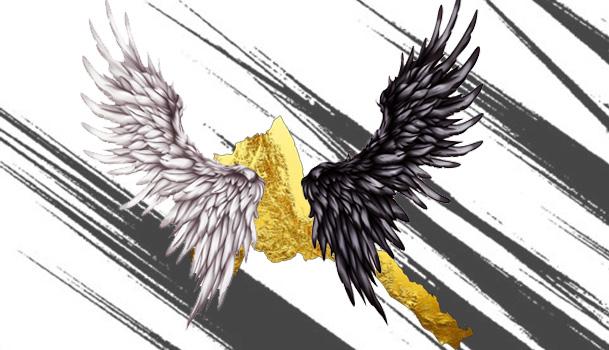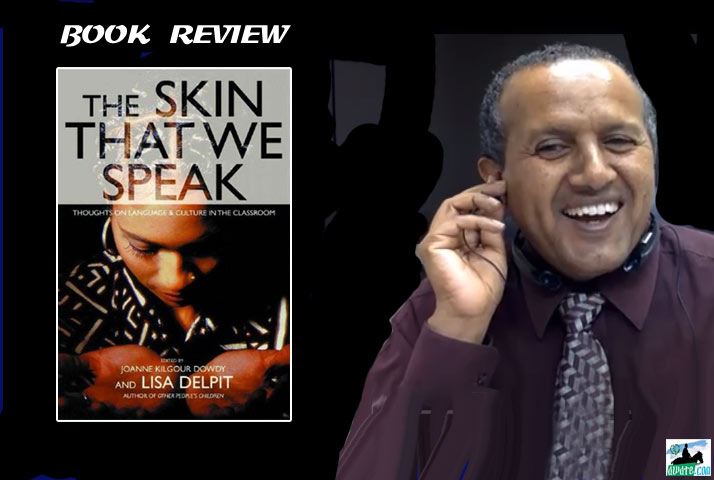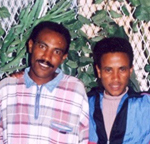The myth of the “pure Eritrean.”

Eritrea, given its strategic location on the Red Sea, has been a gate to Africa and a destination for various migrants and seekers of better opportunities. Eritrea’s association with migration goes deep in history and the Eritrean ethnic composition was formulated over centuries of migrations, intermarriages, and resettlements. Beginning with the indigenous communities who mingled with the new wave of Hamitic migrants, to the waves of Semitic Agazian and Habshat Yemeni tribes who settled in the highlands of Eritrea, to the Umayyad and Abbasid era political asylum seekers from Arabia, to the Rashaida Bedouins who migrated to Eritrea in the mid-19th century and settled in the lowlands of Eritrea, to the Hadremis who came in the early 1900s seeking employment, to the Tigrayans who migrated to Eritrea escaping famine and persecutions of King Yohannes IV, to the Sudanese who opposed the rise of the Mahdist; Eritrea has been a welcoming place and a land of opportunity and achievement. Thus, despite its small population, Eritrea is a vastly diverse and colourful mosaic of cultures and languages.
Throughout the centuries, newcomers not only did they succeed personally, but they also enriched the culture of Eritrea and strengthened its economy. In many cases in the past, Eritrea had a net inflow of migrants; contrary to the current net outflow, which began in the ‘60s and continues unabated. Perhaps the Nilotic tribes—such as the Kunama and the Nara—, could faintly claim indigenousness heritage, but other Eritreans by and large, like other communities in the world, have deep historical association with migration; some came thousands of years, other hundreds, and some decades ago. Even within Eritrea, tribes have been moving across regions, marrying, intermingling, and breaking ethnic confines. Perhaps the case of the Beja tribes, which invaded the Eritrean highlands in the seventh century and mingled with its inhabitants and adopted their Tigrinya language, is a case in point. Therefore, Eritrean ethnic and cultural composition is widely hybrid.
The nine languages spoken in Eritrea are not necessarily an indication of ethnicity. There are many tribes that speak Hamitic language but claim Semitic origin and others who speak Semitic language and have Hamitic ancestry. The Saho speakers, for example, speak Hamitic language, but many of them claim Semitic ancestry. The Hidarb speak T’bdawit, a Hamitic language, yet some of them trace their ancestry to the Semitic Yemenis. Some within Tigrinya speakers, have Hamitic Beja blood, yet they speak a Semitic language.
Furthermore, the two main faiths in Eritrea came with migrants who carried the message of Christianity and Islam. Christianity was most probably introduced by two Syrian brothers Frumentius (Abba Salama) and Edesius and later by the Nine Saints, who are believed to have come from Syria. Islam was also introduced by the migrant companions of Prophet Muhammad, who later became migrant preachers. Both faiths reshaped the social life of Eritreans and make up the core of the Eritrean entity. To suggest both are alien because they came from outside or one of them more Eritrean than the other would be utterly ignorant.
The legacies of two Eritrean icons
Woldeab Woldemariam and Yasin Ba Tuq were two prominent Eritrean intellectuals and political leaders. Both were born in Eritrea, but their families were relatively recent migrants from Tigray and Yemen respectively. Their stories, along with those of the hundreds of leading Eritrean intellectuals, businessmen and activists, is an illustration of the Eritrean success story of integration and inclusion. Woldeab’s parents came from Tigray and settled in the Ad Zarna village, in the Seraye region. Ad Zarna was a tight nit and solid Tewahdo Christian village, not easy for outsiders to integrate. Woldeab’s family wasn’t only Tigrayan but also converted to the Protestant Christian faith. His father was a simple, self-sustaining farmer. Even though they were welcomed and fully adjusted to life in their new home, they faced some exclusions. However, despite the challenges, Woldeab studied at the school of the Evangelical Swedish Mission in Eritrea, eventually becoming educator, journalist, editor, and ardent Eritrean nationalist who survived five assassination attempts.
Ba Tuq’s family, most probably, came from Yemen at an earlier time. They settled in Massawa, which at that time was a thriving commercial hub. It was predominantly Muslim city with a global reach. The Ba Tuqs seamlessly mingled well and given the diverse nature of Massawa, they were integrated comfortably. They engaged in business and became one of the richest commercial families. Ba Tuq was born in Massawa, he was locally educated in Islamic institutions and Italian schools. In the ‘40s, Ba Tuq became co-founder of the largest pro-independence political party, Al-Rabita, and co-editor of Sawt Al-Rabita, the most prominent voice of independence. In 1952, he was elected to the Eritrean Assembly. He was a poet and prolific writer in Arabic. He was an ardent nationalist and advocate for Eritrean independence.
Woldeab and Ba Tuq represented the two main intellectual streams in Eritrea: the Tigrinya and the Arabic. Their writings, along with others, form the genesis of the Eritrean national ethos. Both used their pen and their intellectual depth to advocate for a free and independent Eritrea. The fact that they had migrant background didn’t make them less Eritrean nor less citizens. On the contrary, they remain part of the proud Eritrean nationalistic history and one of its icons.
Ancestry chauvinism
Eritrea thrived when it was an open country, welcoming new innovative ideas, new blood, embraced diversity and nurtured tolerance. Eritrea regressed when it became closed, averse to new ideas, confined to its own realities and exclusivist. It is common in today’s Eritrean political discourse to discredit opponents or question their loyalty by labelling them as not being “pure Eritreans.” Labeling someone with such a label not only puts doubts on their loyalty and motives but diverts away from objective discussion of substantive issues. Woldeab and Ba Tuq are highly acclaimed Eritreans, if anyone has to be doubted because of their ancestry, they would be the first. Interestingly, it was the pro Haile Selassie Unionists who were using Woldeab’s ancestry to discredit him, not the nationalist Eritreans.
Racist sentiments under any guise are a detriment to society. Racism is not only “White vs Black” phenomenon, but it is much broader. A person’s character, ability, and contribution to the wellbeing of society come first and foremost before their ancestry and blood origin. In some ways, the Eritrean struggle for freedom is an embodiment of Martin Luther King’s American dream; a nation where people “will not be judged by the color of their skin but by the content of their character.” The dreams of the founding fathers of Eritrean struggle will come true only when all Eritreans, regardless of their ancestry, faith, ethnicity, and political positions, are treated as equal citizens with equal rights, opportunities, and entitlements.
Ironically, the loudest racist voices come from some Eritrean diasporas, who, as migrants or citizens, benefit from the social entitlements of their host countries. Certainly, they would despise the White anti migrant extreme groups in the West and applaud the welcoming and tolerant voices. Yet, when it comes to Eritrea, they promote the same sentiments they are opposed to in the countries they migrate. The racist vocal voices within Eritreans might be small, but the social media provides them with forums that reach not only to a large audience, but also create dissensions and mistrust within communities. Tribalistic, factional and regional preoccupations are not only outdated, but a sign of a lower self-esteem, limited vision, and triviality not worthy of mature societies and communities.




Awate Forum